Set pieces can define the outcome of a match. In tightly contested games, where chances from open play are limited, corners and free kicks often provide the best opportunity to score. Therefore, mastering these moments is essential for any team looking to gain an edge. In this article, you’ll discover practical set piece drills that focus on timing, coordination, and execution—helping your team become a real threat from dead-ball situations.
Why Set Pieces Matter
Over the past decade, set pieces have accounted for roughly a third of all goals in top-level football. From youth teams to elite clubs, those who consistently train set pieces tend to score more and concede less. While talent and flair matter, success in these moments usually comes down to structure and repetition. That’s where these drills come in—they turn chaos into clarity and set your team up for high-percentage chances.
Corner Kick Drills
1. Near-Post Flick-On Drill
Objective: Create dangerous second-ball opportunities by attacking the near-post zone.
Start by placing a skilled corner taker to deliver an inswinging cross—typically a right-footed player on the left side, or vice versa. Then, position one or two attackers near the top of the box. These players will make explosive runs toward the near post as the ball is delivered. At the same time, station other attackers centrally and at the far post, ready to capitalize on flick-ons or rebounds.
As the cross comes in, the near-post runner aims to glance the ball across goal, ideally to a teammate arriving late at the back post. This movement creates chaos for defenders and forces the goalkeeper to adjust quickly.
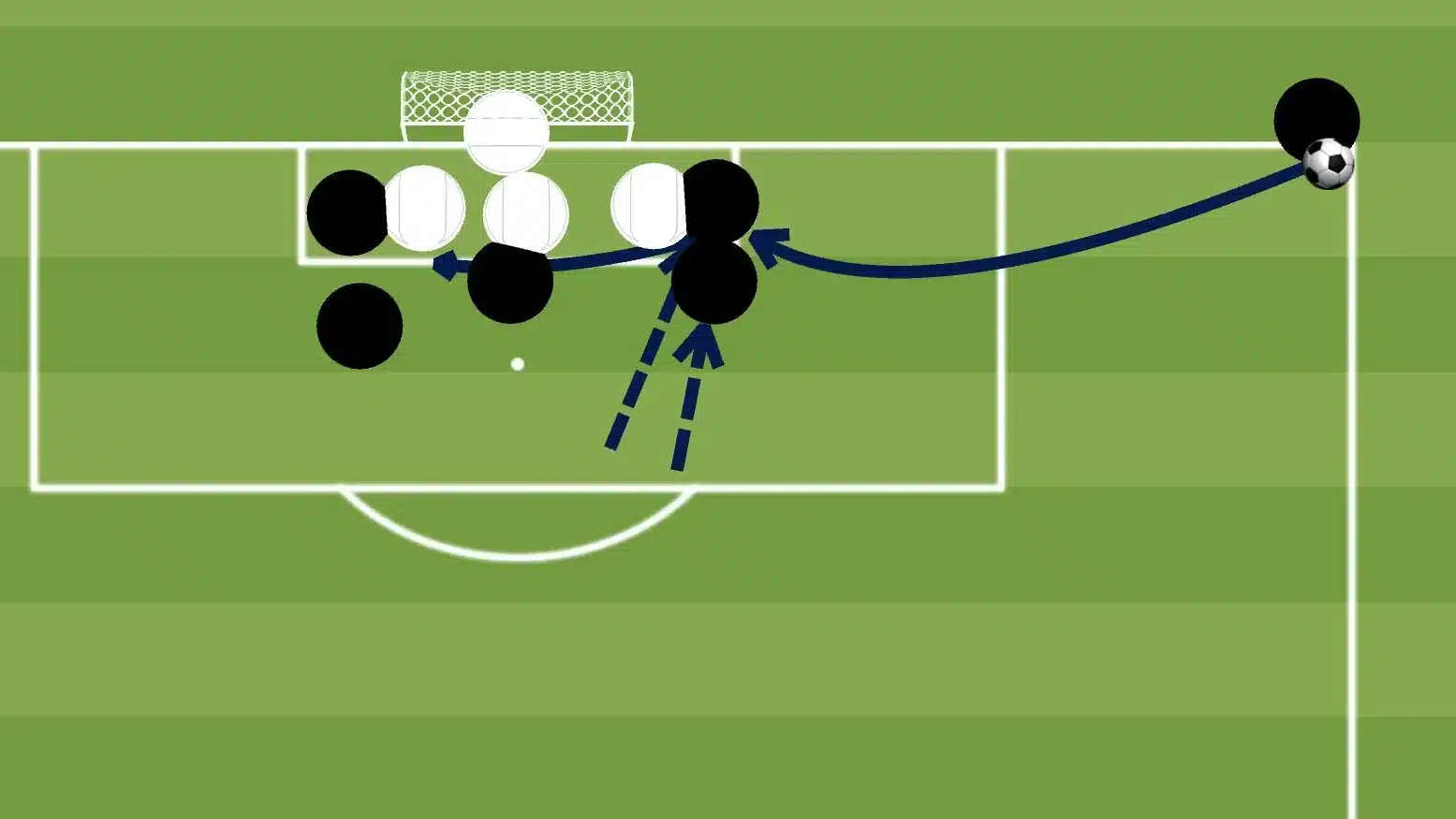
Key Coaching Points:
- Time the run so the attacker meets the ball at full speed.
- Emphasize clean, angled flicks—not just random contact.
- Train secondary runners to read the flick and arrive in sync.
2. Zonal Blocking Drill
Objective: Disrupt defenders in zonal systems and create space for free headers.
In this drill, organize your attackers into pairs. One player in each pair acts as the blocker, making a purposeful run into the defender’s zone just before the cross. Meanwhile, the second attacker curves his run around the block and into the vacated space.
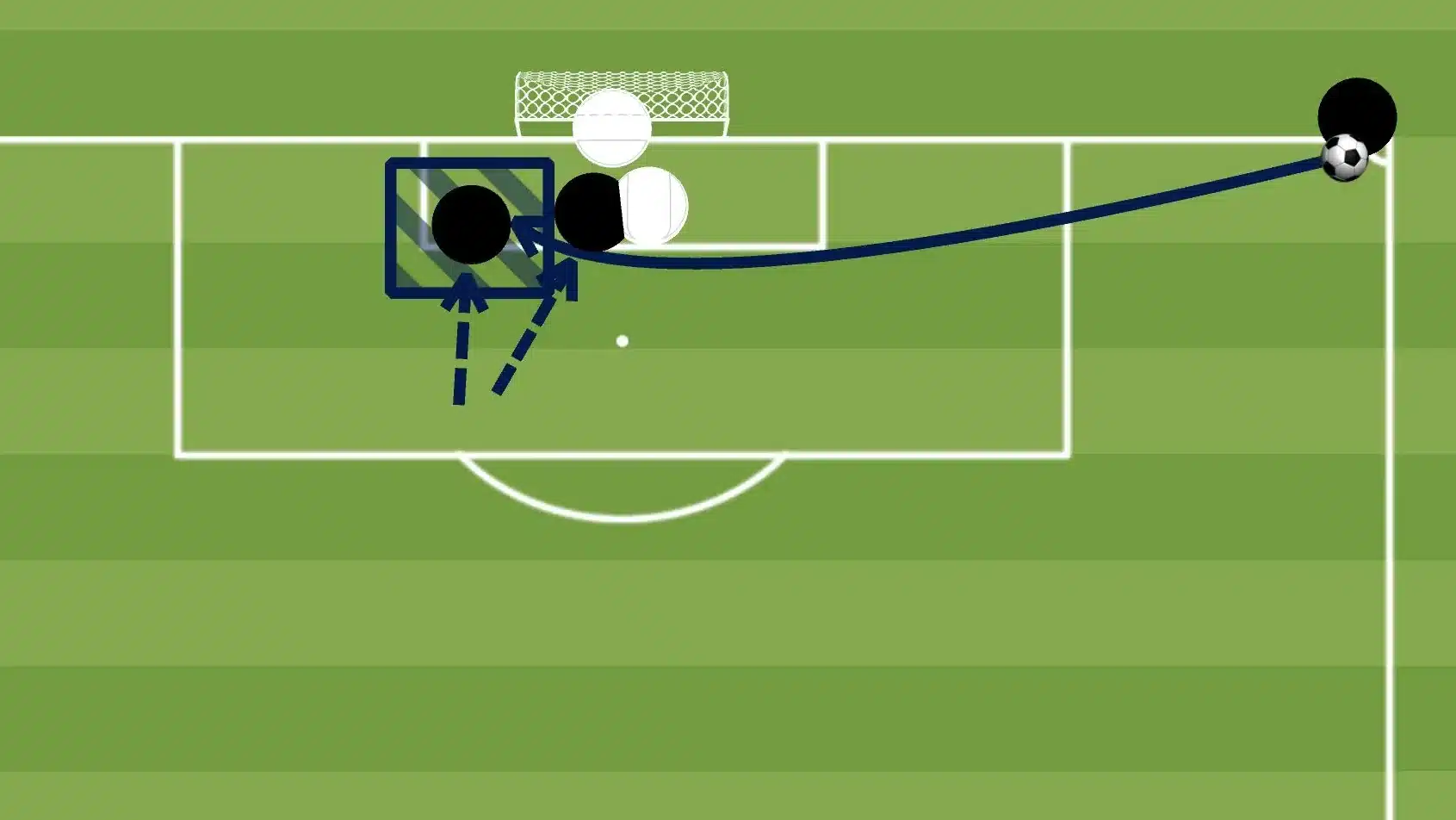
This simple sequence creates confusion, slows defensive reactions, and gives your main attacker a split-second advantage. By rotating pairs and angles, you can develop several variations and keep opponents guessing.
Key Coaching Points:
- Ensure blockers use legal body positioning—don’t push or hold.
- The attacking run should start just as the blocker makes contact.
- Practice different delivery types to match various match scenarios.
Free Kick Drills
3. Top-Corner Accuracy Drill
Objective: Improve your ability to consistently place the ball in the top corners from direct free kicks.
Begin by setting up a wall of mannequins or players. Position the ball between 18 and 25 yards out, depending on your players’ range. Then, task each kicker with bending the ball over or around the wall and into the top corner.
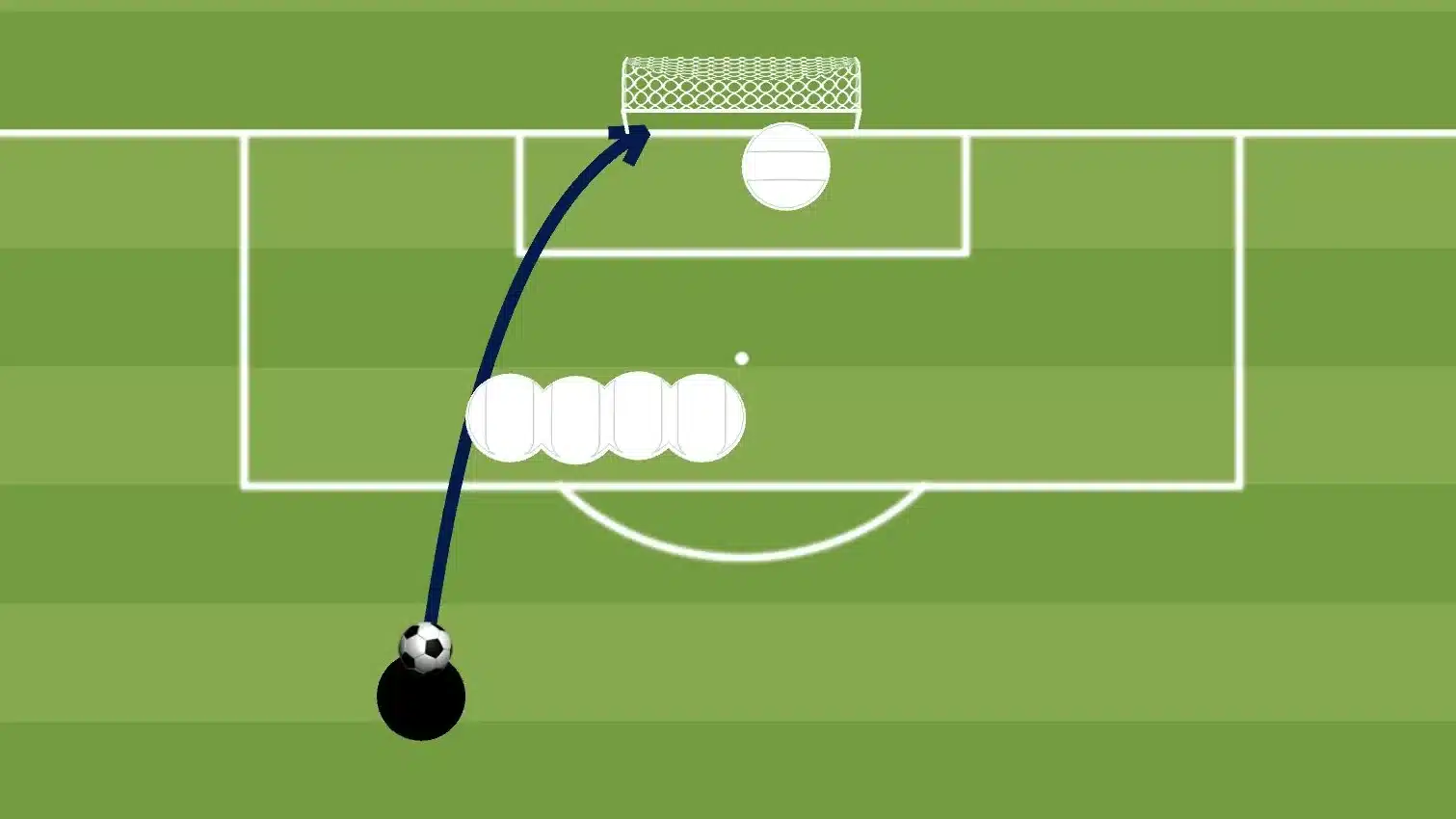
Rather than rushing through reps, encourage players to focus on technique—how they plant their foot, strike the ball, and follow through. With regular practice, this drill builds muscle memory and improves precision under pressure.
Key Coaching Points:
- Strike through the middle-to-top half of the ball for lift and spin.
- Keep your body over the ball to prevent it from sailing over.
- Challenge players to alternate between the left and right corners.
4. Lay-Off and Strike Drill
Objective: Execute short free kick combinations to catch defenses off guard.
Place one player as the lay-off and another as the shooter. When the referee blows the whistle, the first player taps the ball sideways or back. The second player runs onto it and strikes it first-time toward goal. This quick, direct movement often surprises defenses that expect a standard shot.
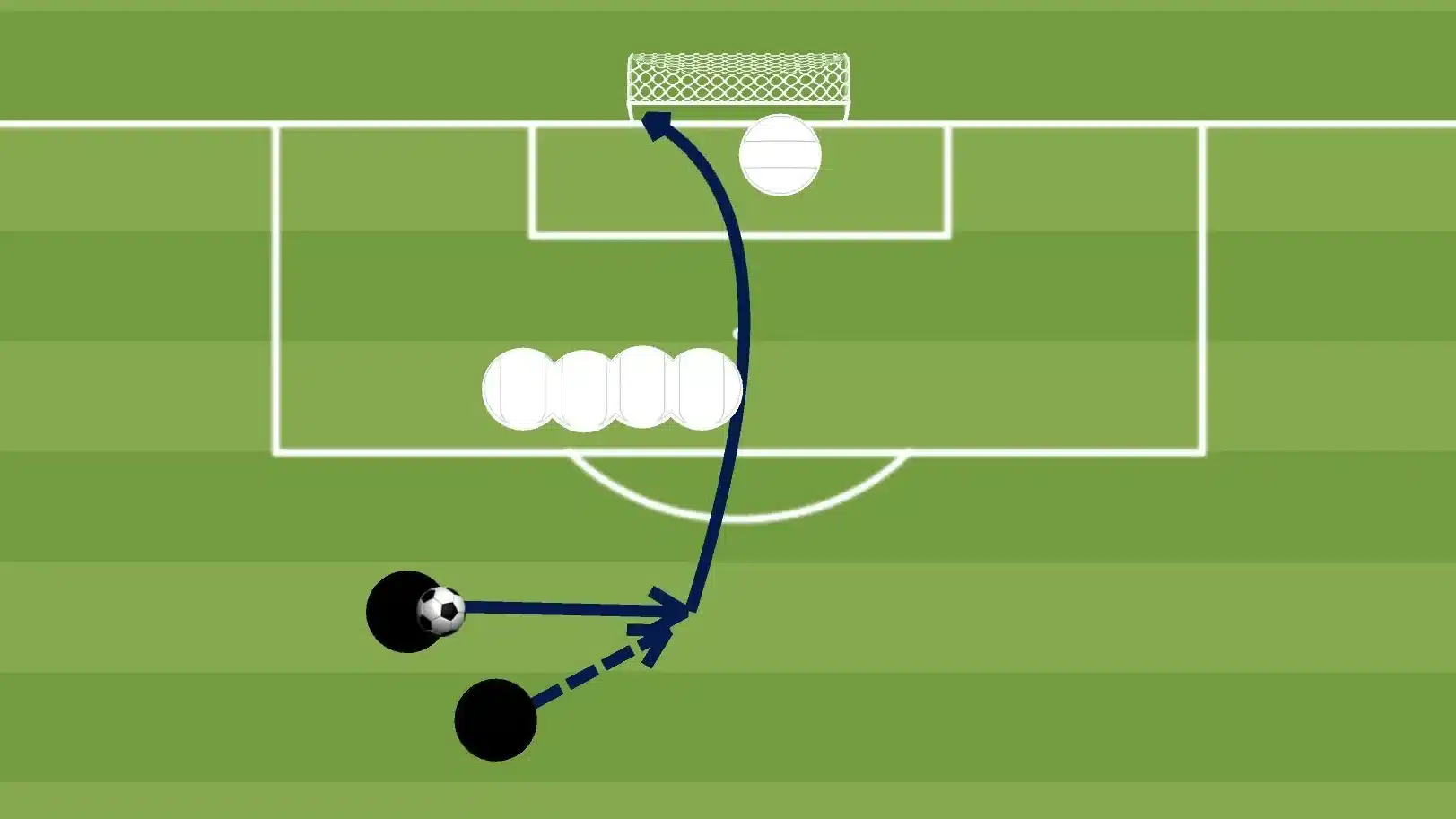
To add more depth, introduce variations—like dummy runs or reverse passes—that force the wall to shift and the goalkeeper to readjust.
Key Coaching Points:
- Keep the lay-off crisp and consistent.
- Encourage the striker to hit through the ball, keeping it low and on target.
- Rehearse different angles and distances to simulate real-game pressure.
5. Decoy Run Drill (For Corners and Free Kicks)
Objective: Use misleading movements to open space for a primary target.
Position three or four attackers around the box. Two of them will make early, aggressive runs—dragging defenders away from central danger zones. While defenders react to these decoy runs, the third attacker delays his movement, then darts into the now-open area to meet the cross or shot.
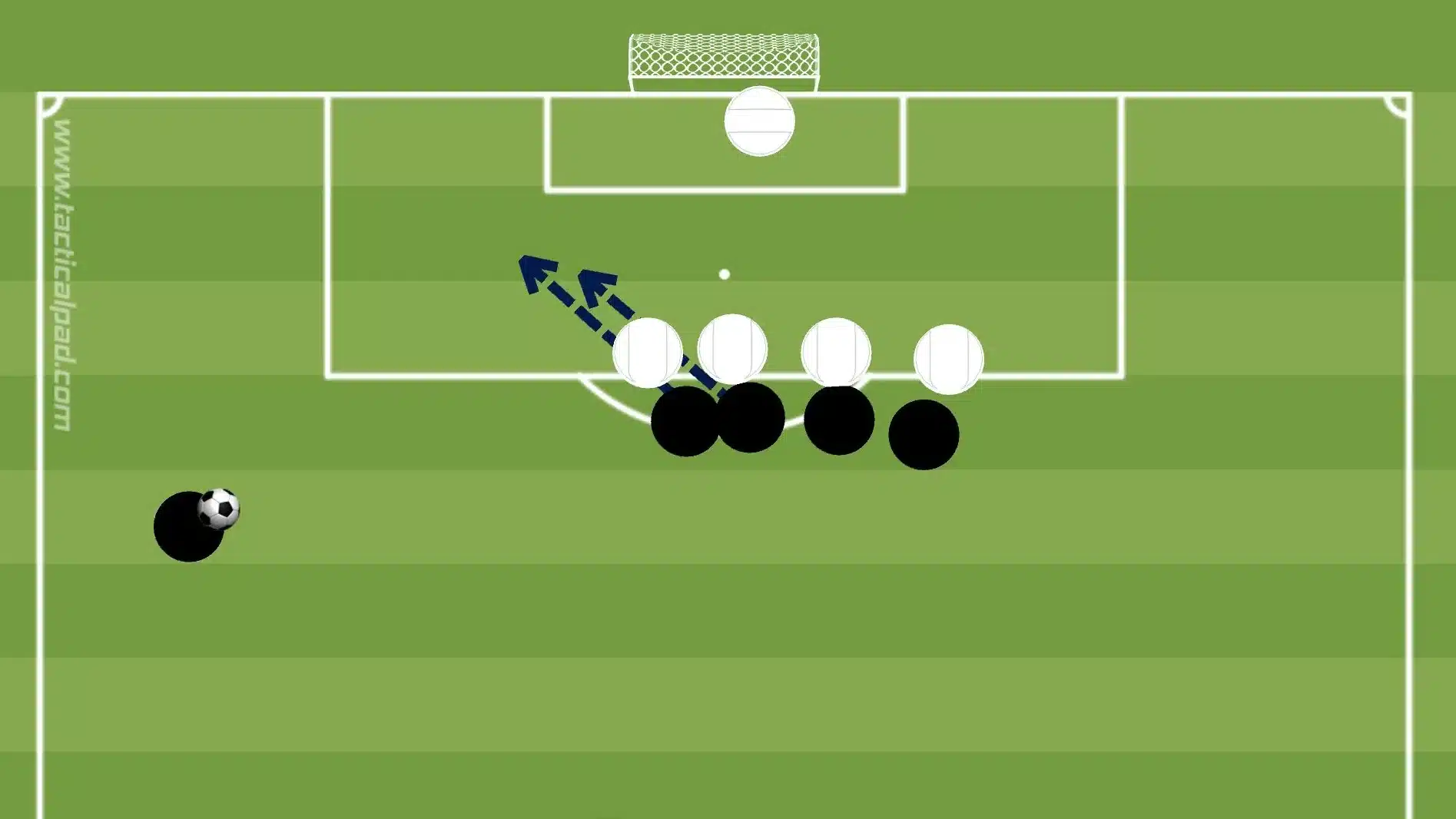

This drill encourages your players to think creatively and play with intention, rather than simply attacking the ball blindly.
Key Coaching Points:
- Decoys must fully commit to their runs to sell the movement.
- The main attacker should delay just enough to create separation.
- Sync the delivery with the final movement to maximize impact.
Incorporating Set Pieces into Game-Based Training
One of the most effective ways to train set pieces is to integrate them naturally into larger training exercises. Instead of treating corners and free kicks as isolated drills, you can embed them into game scenarios to simulate match conditions.
For example, during small-sided games or 11v11 match simulations, restart play with a corner kick or a free kick every time the ball goes out—rather than simply playing from a throw-in or goalkeeper. This keeps players alert to set-piece opportunities and allows them to practice routines under realistic pressure.
By doing this, players learn to connect dead-ball situations with the flow of the game. Timing, positioning, and communication become more automatic. It also allows coaches to observe how players execute rehearsed movements in dynamic, match-like settings.
Final Thoughts: Turning Dead Balls into Gold
While set pieces may seem like isolated moments, they’re full of potential when executed with clarity and precision. The difference between a wasted opportunity and a game-winning goal often comes down to planning and practice. By integrating these drills into your weekly training sessions, you’ll give your team the tools to dominate dead-ball situations.
Whether you’re chasing a late equalizer or defending a narrow lead, being strong on set pieces can tip the balance in your favor. So train them like any other phase of play—deliberately, consistently, and with purpose.
Want to take your sessions even further? Explore our other articles like Counterattacking Drills – Speed and Precision on the Break and Positional Play Drills – Building Spatial Awareness to keep leveling up your sessions.
